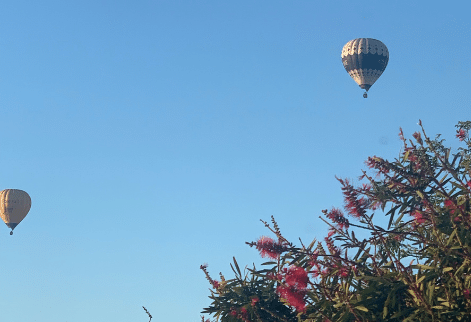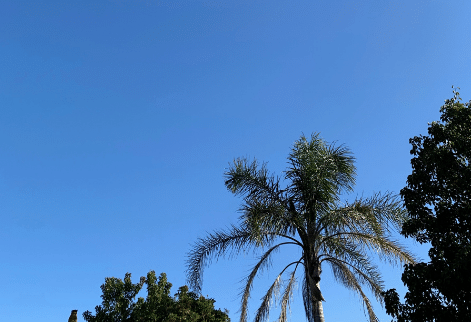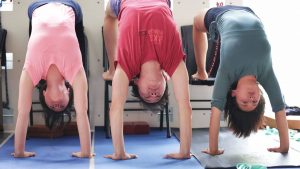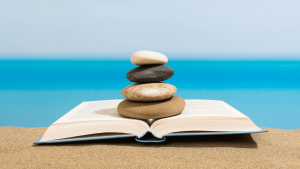“We experience the gift of life through our breath.”
(Bill Bryson, author)
In his book ‘The Body’, Bill Bryson eloquently describes the mechanics of breathing. It’s quite an extraordinary, and certainly vital process, that our body takes care of day in and day out. It’s something we just do – without even thinking about it most of the time,
But do we fully understand just how important it is to breathe well and the positive effect mindful breathing can have on our mind and body?
Breath plays such a vital role in yoga – and any other form of exercise. So let’s explore how we can practise Pranayama – mindful, controlled breathing – to support physical and emotional health.
The goal of Pranayama is to be able to regulate our breathing to strengthen the connection between body and mind, find calm and quiet, reduce anxiety and boost our energy.
That’s why many of Peter’s yoga courses focus on specific breathing techniques and sequences to help you practice Pranayama properly. His upcoming courses are designed for advanced practitioners. However, he can adapt appointments to suit any level, age group, and needs and goals.
Read on to find out how Pranayama can help you head into the new year feeling relaxed and energised.

Connecting body and mind
Breathing in, exhaling, being breathless – songs have been penned, and poems were written about it. In fact, whole movies have been premised around it.
We are holding our breath, waiting to exhale in anticipation, when something is about to happen. Good advice often consists of ‘just breathe’ or ‘take a deep breath’. The feeling of love and being loved can make us breathless. We tend to take a deep breath before heading into the unknown or jumping into what we know will be freezing water. Breathing techniques can ease women through childbirth and generally help patients with pain management. Our breathing is short when we are angry or stressed; longer when relaxed.
Breath is such a powerful tool! It is the bridge between body and mind.
Pranayama aims to actively take advantage of that connection, strengthen it, and unite your body to your thoughts. Understanding how we can use this connection in yoga and meditation and control it will allow us to find calm and greet every day refreshed and with clarity.
What is Pranayama?
Regulate the breathing and thereby control the mind.
(B.K.S. Iyengar)
Pranayama can be described as purposely inhaling and exhaling, as well as holding your breath. It is about regulating your breath in prescribed patterns. You control the duration, timing, and frequency of every breath you take and hold.
You can practice Pranayama as an exercise on its own or alongside asanas (physical postures) and (dhyana) meditation and string them together in different sequences. Regardless of what you choose to practice, controlled breathing has many proven physiological and psychological benefits.
Try and practice Pranayama at the start of your day, in the morning, ideally on an empty stomach.
Examples of different breathing techniques include:
- Victorious breath or Ocean breath (ujjayi pranayama iyengar). This practice dramatically increases what you get from yoga. It serves as an anchor for your attention, bringing your mind to the present moment. By anchoring your attention to your breath, highlighting tensions in your breath and respiratory muscles, your breath will become smoother and more relaxed. In turn, your mind will become more soft and free.
- Alternate nostril breathing (nadishodhana) is the focused practice of breathing through alternate nostrils, one side at a time. It is often used in relaxation and mindfulness practice to calm the mind and body.
- Female honeybee humming breath (bhramari). This Pranayama is named after the black Indian bee because the exhalation resembles the humming sound of the bee. Bhramari is an effective breathing technique to instantly calm the mind and get rid of frustrations, anger or anxiety.
Peter specialises in guiding students through various Pranayama techniques to make sure they are comfortable with each individual breathing method and understand how to string them all together in various patterns to achieve wellness in many ways and situations.
Peter places high value on these techniques and sequences as a yoga teacher. When done correctly, they improve our overall health and the function of our body’s organs.
What are the health benefits of Pranayama?
Practising Pranayama has a long list of health benefits. Many of them have been measured and scientifically proven. Let’s just have a look at some of them:
- Promotes high-quality sleep
Never underestimate the benefits of a good, healthy sleep! It supports development and growth in children and teens. It helps with clarity of mind and brain function and is necessary to keep you in physically good health!
- Helps lower stress and anxiety levels and balance your mood
Stress can actually be harmful to your body! Deep, slow breathing will deliver a boost of fresh oxygen to your vital organs, your brain, your nerves, calm your mind, find harmony and help reduce stress and anxiety. Practising Pranayama in this instance has an almost immediate, positive effect on your mood and energy.
- Helps with concentration and brainpower
If practised over a more extended period of time, the increased oxygen uptake through Pranayama can enhance cognitive performance because it lowers your perceived stress levels. A 2013 research study found that Pranayama helps improve mental flexibility, reasoning skills, auditory and working memory, and concentration.
- Boosts your daily mindfulness
The idea of Pranayama in yoga is to focus on the now, on the present moment. As such, practising mindfulness, being in charge of your present can help you become a more focused, happier, healthier person. It can have a positive impact on your relationships but also on your productivity.
- Physical benefits
Did you know that taking slower and longer breaths reduces appetite? From improving your lung and heart function to improving your hearing and lessening nicotine cravings, practising Pranayama will have immediate and long-term positive physiological effects.

The bottom line
Life often gets hectic around this time of the year, and we can sometimes forget to just stop for a while and take time out. So, as you are preparing for the end of year festivities and summer, take time to look after yourself, take a deep breath and find inner quiet, even if it’s just for 20 minutes every day. This is the perfect time to immerse yourself in Pranayama.
We don’t usually pay attention to breathing; it happens mostly autonomously. But the bottom line is how we breathe can have such a powerful effect on our well-being.
In a year full of uncertainty and changes for many of us, we can use Pranayama to greet each day with energy and a calm mind, develop mindfulness, and stop and smell the roses.
Are you a budding practitioner looking to bring calmness to your day? Do you want to deepen your practice and understanding of the role of breath in yoga and meditation? Or are you a midwife, nurse or physical therapist looking to integrate breathing techniques in your treatment practices?
Whatever your motivation, we hope you have found inspiration in this brief article and look forward to welcoming you to an upcoming workshop soon.
His classes and workshops also make for thoughtful gifts. Get in touch with Peter anytime if you have any questions about a specific seminar or practice or would like advice on gifting the fitting yoga session to a loved one.



